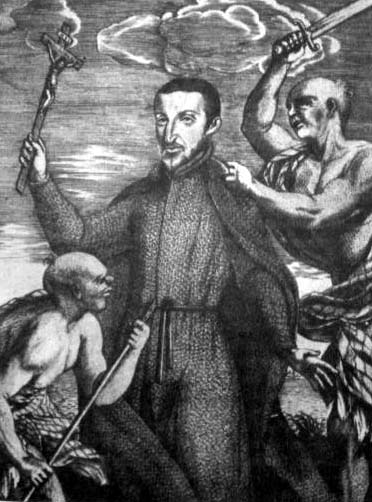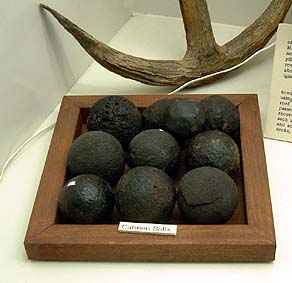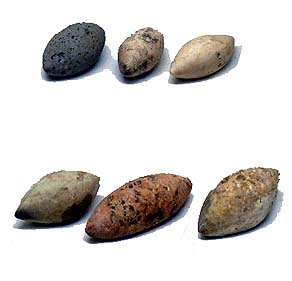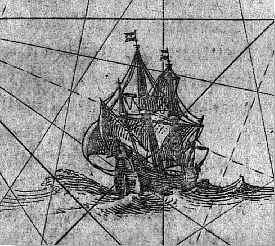 |
 |
 |
 |
||||
|
|
|
|
|
|
|
|
|
|
|
|||||||
|
"Father San Vitores comes 140 years after Magellan, in 1668." Anne recounts the story of this fateful encounter: "The original accounts all describe the first encounter with the missionaries as very positive, very happy. They’re welcome. San Vitores announces or tells the villagers that he’s going to stay, and he needs a place to stay, a host. "When he lands, he himself doesn’t leave the ship the first night. Instead he sends a landing crew bringing gifts of iron, and they try to find out ‘Is this okay, can we stay with you?’ And of course the villagers were probably overjoyed to have him, because he’s bringing with him iron and weapons, and that’s a kind of strategic victory for that village."
|
||
|
|
||
|
"But within six weeks, there were already attacks against the Spanish. Their soldiers are getting stabbed, a couple people getting killed, so clearly there were already dangers. And besides, when the Spanish came, there were only four priests and four brothers plus 32 soldiers, so it was a small group. But you’re bringing four priests out here with 32 soldiers? "To me they clearly expected violence, otherwise they wouldn’t be sending that many ‘body guards’ and the priests themselves, who one historian described them as the ‘Pope’s shock troops.’ The Jesuits got sent to these danger zones. The metaphor of the ‘cross and the sword’—a cross in one hand and the sword in another—is a metaphor used for Jesuits. They were sent to these areas where danger was kind of expected."
|
|
|
Chamorro Sling.
|
“San Vitores himself survived four years and was killed in 1672. His death occurred at the time of the increasing tension. There had been a number of attacks. The biggest battle that the Spanish recorded happened in 1670, two years before San Vitores died, where 3,000 Chamorro men had stormed the Spanish garrison in Hagåtña. But there’s a real conflict between the Chamorro battle and the Spanish battle, because Chamorro battle, usually after one or two people were injured or died, the battle was called. There was no all-out war, no total war. On a small island, that would have been just crazy. "The Spanish accounts before San Vitores always said, 'Usually upon the sight of blood, the warriors flee' and that’s it. The truce is called. So that one battle where 3,000 Chamorros surrounded the Spanish garrison, not a lot went on as far as in the Spanish or European view of war. The Chamorros surrounded it and they were throwing the insults and taunts back and forth, but it wasn’t like all out fighting. They just had surrounded them and then after a time—the Spanish say 40 days—the warriors just went home, probably just getting bored."
|
|
|
|
|
"So when San Vitores dies, there have already been signs—huge signs—of impending doom. A week before he died, a priest got killed. San Vitores apparently called for everyone to regroup back in Hagatña, and on his way, he decides to stop in the village of Tumon. Now in the accounts, supposedly it’s to visit this chief Matå‘pang whose daughter was sick. Again, we only have Spanish accounts, so you know, a sick daughter—to me it creates sympathy for San Vitores because it appears like he’s giving his life for a sick baby girl, kind of a hero story. “He stops in this village, where it’s already known that Matå‘pang is upset with him, does not want anything to do with him. So he’s entering what he should know is already a dangerous area and he doesn’t have any of his 32 soldiers with him. I question it. He knows there’s all these rumors of war, all these rumors that the Chamorros are out to kill him, and he decides instead of going straight back to Hagatña for protection, to stop off at this village."
|
||
|
|
||
| "The only account we have is the account that was written after he died, and in that account it says that he went to baptize this baby girl and that Matå‘pang said no, and then San Vitores leaves the house, waits for Matå‘pang to leave and then after Matå‘pang leaves, San Vitores comes back in and baptizes the girl. Then when Matå‘pang finds out, he gets a friend of his and they go and kill Father San Vitores in Tumon, and dump his body over the reef. "Since we only really have this account from that Spanish source, it’s hard to really know what exactly happened, but that’s the account that’s been accepted. He was there to baptize this baby girl."
|
|
|
"All the accounts describe the Spanish efforts as peaceful—that the priests were men of peace and Father San Vitores, in all of the written accounts, he’s called a man of peace. But he did not avoid violence at any cost. He wrote letters where he asked for more soldiers. He said ‘We need a hundred more, we need 200 more.’ In fact, his letters said ‘Some means of inspiring fear is necessary or they’ll wipe out all of the mission, the missionaries.’ "So I’m always kind of reluctant to accept how he is always been described as a man of peace. Maybe he was pragmatic, maybe he knew that they were going to ‘kill us all if we don’t fight back’ but he definitely was not a pacifist, which is unfortunately how he is remembered in local history."
|
|
“That’s how the Spanish accounts always portray him. In all of the paintings, he has a halo over his head and he’s holding the cross high. Even when he’s being stabbed in a number of paintings, and blood’s gushing out of his chest, he’s still holding the cross. "So because the church has become such a central part of culture, it’s hard for many Chamorros today to associate the church with bringing violence. They kind of forgive the church and say it wasn’t their fault. ‘Things got out of control’."
|
|
|
|
|
|
The death of Father San Vitores is a turning point that transforms this hitherto ignored Spanish outpost into a subjugated Spanish colony.
|
||
|
|
||
|
|
|
|
|
|

|
| Inarajan Home | Map Library | Site Map | Pacific Worlds Home |
|
|
|
|
|
|
|
|||
| Copyright 2003 Pacific Worlds & Associates • Usage Policy • Webmaster |
|||








